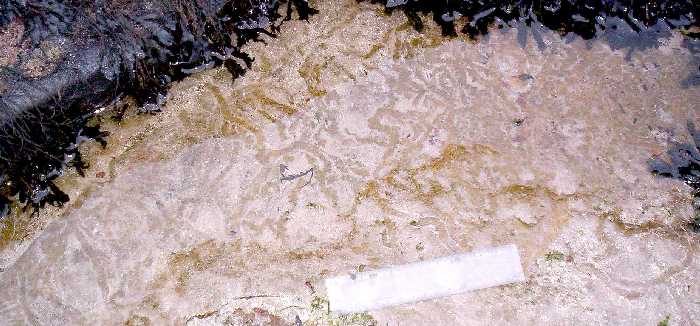
That's a six-inch (15 cm) ruler in the close-up inset, by the way. It features in lots of these photos.







































 | When lighting conditions are ideal it's possible to see that an ordinary patch of wet sand has evidently been a veritable Spaghetti Junction for its inhabitants since the last tidal smoothing. |


 The end of that particular cycle happened as the first autumn storm attacked the accumulated sand and cast-up seaweed.
The end of that particular cycle happened as the first autumn storm attacked the accumulated sand and cast-up seaweed.